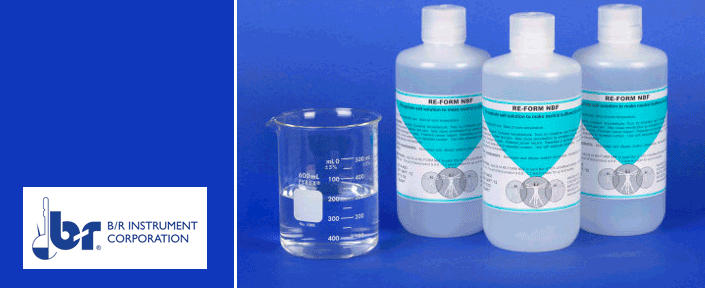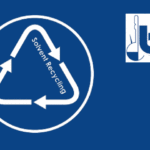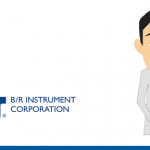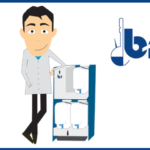Products are for professional/laboratory use only.
Tell me about the details of the formalin recycling process.
You’ve been using formalin for years and now you are thinking about recycling it. Great idea.
In most places formalin isn’t too expensive. But it is expensive to dispose of. Or maybe you are dumping it down the drain and are worried about the backlash if people find out.
It doesn’t take a lot of training or special knowledge to recycle formalin. But for those who are curious about the details of formalin recycling anyway, this post is for you.

Formalin
Formalin is used to fixate tissue or “fix” tissue. The formalin binds to enzymes and crosslinks proteins to stop tissue from decaying. Formalin is consumed in the “fixing” process when it
is incorporated into the tissue. The result is a deplete formalin solution that at some point is no longer concentrated enough to fix tissue.
Formalin is normally used at 10% concentration. After use it is typically in the 7-8% concentration range.
Most formalin has buffers added to give it a neutral pH. This is so called “neutral buffered formalin” or NBF.
Contaminants
High boiling contaminants in formalin include fat, paraffin, protein, biological materials, and buffer salts. The formalin also has excess water that needs to be removed in order to bring the solution back to the original 10% concentration.
Recycling Formalin
To recycle formalin you should choose a solvent recycler that uses fractional distillation by temperature. If the concentration is too low, the tissues will decay and if the concentration is too high the tissue will be tough and difficult to cut.
It is critical that the recycler is able to consistently bring the formalin concentration back very close to 10%.
Formalin will distill over. Once all the formalin has been distilled into the pure formalin container the recycler will automatically stop and cool down.
Left behind in the boiler is excess water with some fat, protein, biological materials and buffer salts.
If the test indicates that the formalin is too concentrated or too dilute, there is handy table that shows how to adjust the formalin concentration by adding water or concentrated formalin.
Anatech is a well-respected company in all things histology. Their test kit is very accurate and has a really long shelf life.
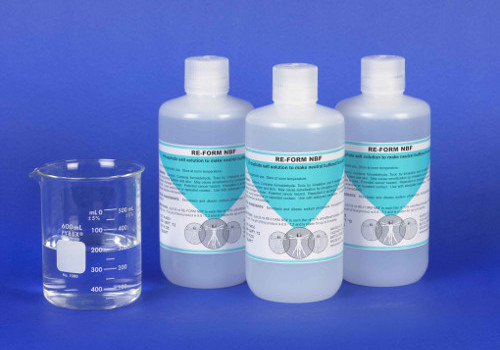
The formalin will be 99.9% pure and 10% concentration. You can use it anywhere you would use new formalin including in the tissue processor and surgicals.
Recovery Rate
The recovery rate for formalin is about 80%.
Since the recovery is 80%, you will still need to buy some formalin but it is about 20% of what you were buy before recycling.
Waste disposal
The boiler waste from a quality recycler should not contain any formalin, not even trace amounts. Since the boiler waste contains no formalin, it is suitable for drain disposal. It is mostly water with some fat, protein, biologicals and salts.
Boiler waste that contains formalin should be disposed of as hazardous waste. Check with manufacturers about the boiler waste.
Choose a recycler the guarantees there is no formalin in the waste.
Re-buffering Formalin
Formalin contains buffer salts to maintain the correct pH for staining. The formalin recycling process removes the buffer salts along with the contaminants. After recycling buffer salts should be added.
Buffer salts are inexpensive and can be purchased through most histology supply catalogs. Recipes for neutral buffer salts are available online for those who prefer to make their own.
Anatech makes a buffer salt that is already in liquid form. There is no need to dissolve the solid buffer salts. It a great option for re-buffering.
Checking your formalin concentration
We recommend testing your recycled formalin with a kit from Anatech LTD. Each kit is good for more than 100 tests.
Histology Solvent Recycling
B/R Instrument offers a variety of equipment for recycling xylene, alcohol, formalin, and xylene substitutes in the histology laboratories.
- Xylene/Alcohol Recyclers
- Formalin Recyclers
- Xylene/Alcohol/Formalin Recyclers
Get serious about sustainability – reduce costs and become more sustainable. Thousands of labs have made the move towards costs savings and sustainability. Don’t get left behind
B/R’s purity guarantee makes solvent recycling a sure thing. You can feel secure that your solvent recycler will produce high quality solvents as advertised. It’s guaranteed.
Start today by contacting us for more information on the solvent recycler that is right for your lab. Don’t worry. We promise not to hound you with phone calls and emails just because you asked for information.
This article was originally posted on the B/R Instrument website. View original post here.



